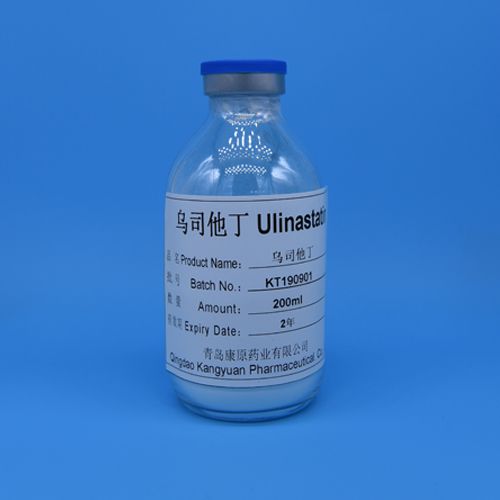In 1909, The existence of ulinary trypsin inhibitor in urine was first
reported by Beuer and Reich. In 1985, Ulinastatinwas marketed in Japan and applied in
the clinical treatment of diseases caused by cell lysosomal membrane rupture,
hydrolytic enzyme overflow and hyperfunction (e.g., acute pancreatitis). Studies
have shown that UTI has neuroprotective effects and has beneficial effects on
neuropathic pain (NP), which may be a new measure to prevent and treat NP. In
this paper, the neuroprotective effect of Ulinastatin and its effect on NP are
reviewed.
Pharmacological characteristics of Ulinastatin and its common clinical fields
Ulinastatin has been isolated and purified from healthy male urine and has been
used clinically in Asia for over 20 years. UTI is a broad-spectrum serine
protease inhibitor, and its low molecular weight degradants have strong
inhibition of hydrolases. Under physiological conditions, UTI exists in the
human body. UTI concentration changes when the body is exposed to infection,
shock, tumor, pregnancy, surgery, or glucocorticoid administration.

Ulinastatin is synthesized primarily in the liver and is metabolized by the kidneys
and excreted in urine. Clinically, UTI was administered intravenously and the
drugs were metabolized by the kidney. Clinical applications include acute
pancreatitis, sepsis, complex multiple trauma, shock, ischemia-reperfusion
injury, acute lung injury, and malignant tumor. The main mechanisms are
anti-inflammatory (inhibiting the production and release of inflammatory
factors, activation and focusing of inflammatory cells), reduction of
intracellular lysosomal membrane damage, reduction of vascular permeability,
improvement of immune function (promoting immunoglobulin production, improving
immune suppression), regulation of oxidative stress and apoptosis. The main
pathways involved are p38MAPK, JNK, STAT-3, mTOR, NF- B, etc.